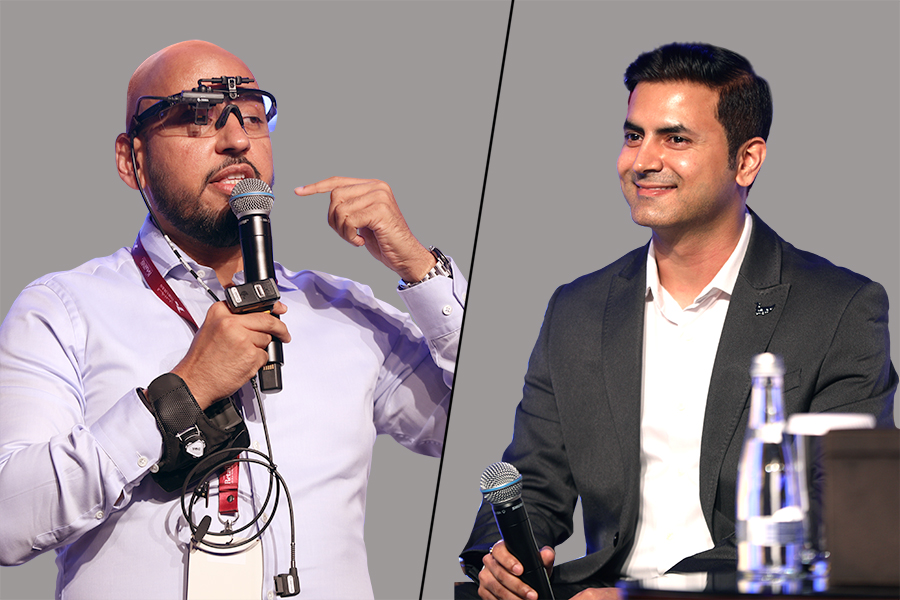
Wearable technology has emerged as a game-changer in the retail sector. It has the potential to appease the modern retail landscape both on a business-to-consumer front and internally on a business-to-business front. From improving in-store experience, personalisation and real-time marketing to transforming operations in the back-end, the use-cases of wearables in retail are very many.
Apple Watch, Fitbit, Google Glasses, RFID wristbands are all examples of commonly used consumer wearables. Ring scanners, smart glasses or head-mounted visual displays that brings live data documents, work procedures and health and safety information into view for employees are examples of commercial wearables. Both consumer and commercial wearables, especially in retail and the leisure and entertainment space has been soaring. According to the Business Wire, the global smart wearables market is expected grow from $18.08 billion in 2021 to $20.64 billion in 2022 at a compound annual growth rate (CAGR) of 14.1%. The market is expected to reach $31.95 billion in 2026 at a CAGR of 11.5%.
The B2C Case
Every amusement park will either have already implemented or be looking to implement wearable technologies at scale. Even wearable gadgets like fitness trackers, smartwatches, and the MagicBand, are a big success that will stimulate further developments. For example, on Legoland’s Ninjago ride, wearable technology makes the rider’s body serve as their controller.
MagicBands comprise small antennae and a high-frequency radio device. The antennae come in handy for the detection of the MagicBand in short-range touchpoints. On the other hand, the radio device communicates across longer distances.
Saudi-based Abdullah Al Othaim Leisure company are looking at the various use-cases of wearables within their theme parks and have noted a number of benefits for customers and their business.
“We have introduced customised wristbands for kids in our facilities, which has proven to be very secure. As a retailer, the wristbands help us track the exact location of the kid within our premises and parents have access to that information on their mobile phones,” said Chandan Baherwani, Marketing Manager at Abdullah Al Othaim Leisure company.
Moreover, the park management can stream real-time data about the activities the guests are engaging in.
“From a business point of view, we get access to invaluable data such as which ride is being preferred more and the dwell time at specific attractions, which in turn helps us strategise ways to increase interactions and customisations. It also helps the operations teams to understand the peak hours and the downtimes that helps them allocate their human resources and manage inventory,” he explained.
The bands are also a great example of how parks use technology to create seamless, frictionless, and memorable immersive experience for visitors.
“VR is an important wearable technology that is revolutionising the leisure space. For example, the traditional dancing machines where kids would simple follow the arrows on the mat to move their legs is now a fully immersive amusement experience with the introduction of VR, therefore enhancing the overall customer experience,” he added.
The B2B Case
On the backend, wearables provide employees with hands-free access to information such as assigned tasks and completed activities, so that they can be more efficient, and planning can be optimised. Wearables can also provide easy access to interactive step-by step instructions for task completion and connectivity with remote team members and help-desks for support, leading to continuous improvement in back office and warehouse operations.
Hozefa Saylawala, Director of Sales at Zebra Technologies demonstrated how different kinds of wearable technologies can help improve efficiency, productivity, and ease operations for the store staff using Zebra’s hardware.
“Because of the growth of e-commerce, hand-held devices on the operations floor are no more efficient, as retailers are now issuing more number of orders than they used to before. So then how can the warehouse worker or store operator do more than he used to in the same amount of time more efficiently?” he asks. “Just moving the hand-held device with the same computing power around the wrist, thus freeing up the hands, can help improve efficiency.”
Today transaction rates are growing exponentially, and mass resignations are the fact of the market. Retailers are struggling with the issue of labour shortages. While the organisation is going through labour churn over, how do retailers ensure that they have enough time to train them and bring them up to speed?
“Wearable eye and headwear with a mobile computer on the lens is today capable of giving all the information a staff would need in a digital format,” he shows. “Wearable technology has multiple functions whether it is around your wrist monitoring your health and safety or to gain consumer data that can directly benefit your business operations or in the hands of operations and supply chain staff to drive productivity enhancement,” he concluded.
Notifications